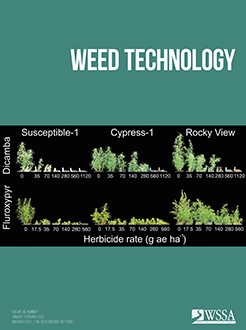Foliar delivery of herbicides is a common means for plant management in aquatic environments. Though this technique is decades old, little is known about vegetative spray retention relative to this application method. A more complete understanding of maximizing herbicide retention could lead to improved plant management while simultaneously decreasing pesticide load in aquatic environments. Therefore outdoor mesocosm experiments were conducted in 2020 to evaluate the effect of adjuvant type on foliar spray retention in waterhyacinth [Eichhornia crassipes (Mart.) Solms]. Additionally, the effect of carrier volume on spray retention in waterhyacinth, waterlettuce (Pistia stratiotes L.), and giant salvinia (Salvinia molesta D.S. Mitchell) was documented. Spray deposition did not differ among the nine adjuvants tested; however, spray retention was reduced 6% to 11% when an adjuvant was excluded from the spray solution. The effect of carrier volume on spray retention in waterhyacinth, waterlettuce, and giant salvinia was also investigated. Decreases in spray retention were most sensitive to increased carrier volume in waterhyacinth, followed by giant salvinia and waterlettuce. Among species, spray retention potential, as determined by intercept estimates, was greatest in waterlettuce and giant salvinia regardless of carrier volume. Asymptotes estimates for waterhyacinth, waterlettuce, and giant salvinia were 33%, 46%, and 79% spray retention, respectively. In other words, spray retention was the lowest and remained relatively constant at these values for the high carrier volumes tested (935 and 1,870 L ha–1), which were likely due to the presence of pubescence on leaves and flatter leaf architecture represented by waterlettuce and giant salvinia compared to the glabrous vertical leaves of waterhyacinth. Future research will evaluate these concepts under field conditions.
Nomenclature: giant salvinia, Salvinia molesta D.S. Mitchell; waterhyacinth, Eichhornia crassipes (Mart.) Solms; waterlettuce, Pistia stratiotes L.






